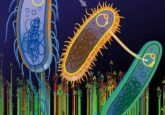Near-infrared spectroscopy detects food allergens

Near-infrared (NIR) spectroscopy provides a rapid and cost-effective method for food-allergen detection.
Over 15 million people in the US have a food allergy. Even trace amounts of a substance can cause severe allergic reactions, which result in hundreds of thousands of hospitalizations every year. Researchers at the University of Illinois (IL, USA) investigated the potential of NIR spectroscopy to detect three types of allergens in quinoa flour, demonstrating that NIR spectroscopy is a reliable and fast method to detect contaminants in food products. This new detection method could benefit millions of people with food allergies.
Cross-contamination between grains can easily occur during processing due to improper hygiene and negligence, so having a reliable allergen-detection method is essential. This is typically done with analytical methods that detect the corresponding allergenic protein or DNA using techniques such as enzyme-linked immunosorbent assay (ELISA), rocket immuno-electrophoresis (RIE) and enzyme allergosorbent test (EAST). These often require the destruction of the sample, as well as costly equipment and specialized personnel.
“NIR spectroscopy offers numerous advantages,” commented Mohammed Kamruzzaman, the corresponding author of the paper. “It is non-destructive, non-invasive and doesn’t use chemicals. It provides results in real time, and with a short training period, anyone can perform the analysis.”
 Compound in herbal remedy could lead to novel antimalarial drugs
Compound in herbal remedy could lead to novel antimalarial drugs
Researchers identify a compound that possesses antimalarial properties in a subarctic medicinal plant used by First Nations.
This research group explored the potential of NIR spectroscopy for allergenic detection, developing a method to detect peanut, sesame and wheat contamination in quinoa flour. Quinoa flour is often used as a wheat substitute, so it is especially important to be able to detect the presence of any allergens in this food product.
NIR spectroscopy uses near-infrared light to measure the absorbance of different wavelengths by a sample.
“Each material has a unique ‘fingerprint’ of light absorbance. When allergens are present in the quinoa flour, the NIR instrument can detect them. Then we use machine learning to analyze the gathered information, allowing us to identify the allergens and quantify their concentration,” explained Kamruzzaman.
This is an indirect method of analysis meaning it cannot accurately measure the amount of each contaminant present in the sample, but NIR spectroscopy does accurately detect if an allergen is present or not. This is the level of information that a consumer would need to know, making NIR spectroscopy a suitable tool for allergen detection.
Most techniques only detect the presence of a single allergen. However, NIR spectroscopy can detect multiple allergens simultaneously. It can also be modified to detect other allergens and for use in products other than quinoa.
The researchers commented that it should be possible to develop a low-cost miniature sensor based on this method. This would allow the sensor to be used in a variety of settings, including in industry and food manufacturing facilities, in restaurants and even at home. Eventually, this could even lead to a smartphone app, allowing consumers to detect food allergens on the spot.





